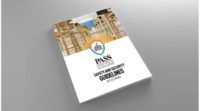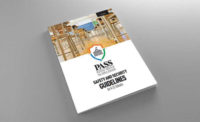A majority of both parents and teachers (67 percent) are much more concerned about school safety now than they were five years ago, according to the newly released 2023 K-12 School Safety Report by Motorola Solutions. These sentiments are felt despite 73 percent of parents and 80 percent of teachers stating they are confident that their school’s emergency response plans are effective.
The research reveals the most pressing concerns for those closest to school safety and highlights their perceptions about emergency preparedness plans, communication practices, school safety technologies and training for teachers and students. The report queried 1,000 K-12 parents and 1,000 K-12 educators across the United States.
“School safety is top of mind for parents and educators alike, with both groups expressing concerns about mental health issues, bullying and active shooter situations,” said Todd Piett, vice president of Rave Mobile Safety at Motorola Solutions. “Ensuring that school personnel and families are aware of proactive planning practices, the notification methods employed by schools, technologies in place to thwart and report emergencies and school protocols for when incidents occur will not only help to alleviate worries, but ultimately improve safety outcomes.”
Among key findings from the report:
Safety and preparedness plans are key to gaining parents’ and teachers’ trust: When looking at schools, parents and teachers both rank school safety as a critical factor (66 percent for parents, 72 percent for teachers).
Student mental health continues to be a top concern: Sixty-four percent of parents and 68 percent of teachers are very or extremely concerned about students’ mental health. Additionally, parents and teachers are worried about the mental health of community members who may perpetrate acts of violence on a school campus and teachers’ mental health.
Communication channels before and during crisis events are essential: Nearly half of teachers (48 percent) say that they are able to submit anonymous or confidential tips to their school, public safety or both, compared to 43 percent of parents. In the event of an emergency, 57 percent of teachers indicate they would typically use a classroom phone to call the main office — a time-consuming approach that does not simultaneously loop in school district officials, 911 call handlers or first responders who may need to act fast.
School safety technology is in use — and can help to put parents at ease: Seventy-one percent of teachers say that their school has adopted new safety technology in the last two years, but 54 percent of parents say they haven’t seen new technologies implemented. This disparity presents an opportunity for schools to periodically communicate with parents about the safety solutions they're implementing to reduce risk or expedite response. Almost half (46 percent) of parents say panic button apps that allow teachers and school staff to quickly notify 911 would increase their confidence in school safety.
Nearly all teachers and parents report participation in lockdown drills: Eighty-nine percent of parents say their child has participated in a school lockdown drill, with 96 percent of teachers reporting the same. Eighty-two percent of parents say their child has participated in a drill specifically for active shooter preparedness, while 73 percent of teachers have participated in such drills with students and another 10 percent without students. Thirty-six percent of teachers have not engaged in training with first responders but they want to.
The independent market research firm Researchscape conducted the survey in June. To view and download the full findings of the report, go here.



